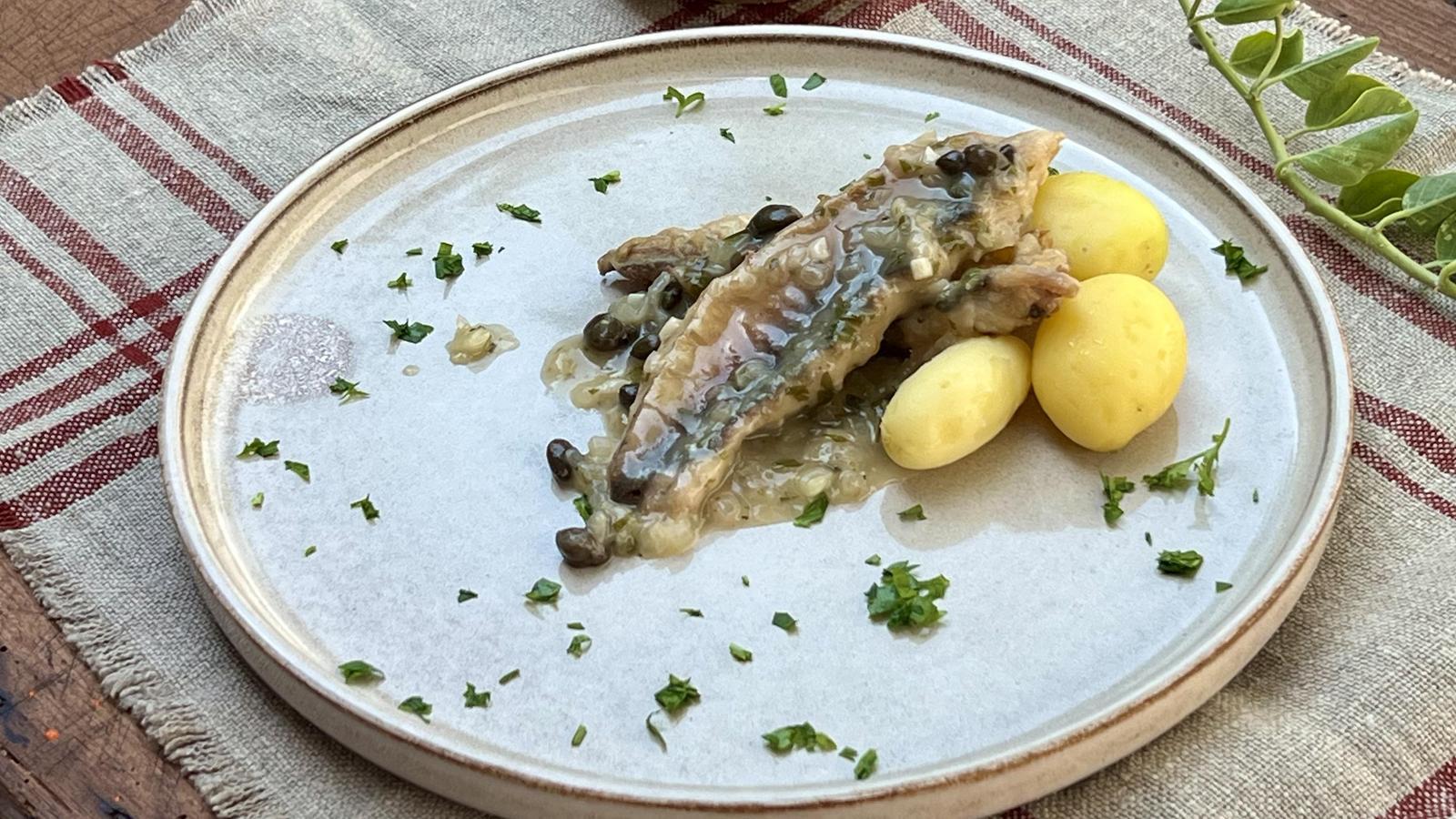Flowers without prying
We explain how to prepare fried mackerel with capers


PalmIt was pitch black when they reached the fence. Then his mother would leave him curled up beside the stump of an almond tree to sleep a little longer. The stars fell intermittently upon him, enveloping him. The jingle of bells could be heard here and there as she, crouching over the capers, skillfully harvested the fruit, dodging the treacherous tiny thorns that hid among the leaves and shoots. When the first light of day appeared, she would wake him, and he, small as he was, would accompany her, checking the bushes she had harvested first. The task would stop in mid-morning and resume when the heat eased. The heavy work remained in the memory of her constantly linked back and her patchy hands, dried from the stubble that covers the plant. This was the case every day, every summer month, until the capers no longer had any quality and became soft or opened just as they were born. A flowery estate could betray a family's neglect, indolent flowers, lost wealth. Now the fields of cover are immense gardens that would shame my godfather if he could see them, he who was once a child curled up in an almond tree.
Tapas have been present throughout the Mediterranean since ancient times. Greeks and Romans knew of their medicinal and culinary uses, and it's likely that the Romans contributed to their spread. The first written references we have in Mallorca date back to the late 15th century. A notarial inventory from 1493 mentions land used to grow capers, and a few years later, the sending of capers as gifts appears documented, indicating that they were considered a prized product.
Commercial value
Between the 19th and 20th centuries, capers began to acquire commercial value. The technique of preserving them in brine and vinegar allowed for their export and ensured their intact arrival to demanding markets such as France and England. Mallorcan capers, small and intense in flavor, were recognized as a quality product. Towns like Campos and Llubí were their main producers, and the harvest, although heavy and intensive, provided a significant economic benefit to families. Generally, it was women accompanied by their children who were responsible for harvesting them and transporting them to be sold. With the passage of time and the opening of markets, competition from countries like Turkey and Morocco, with lower production costs, put an end to the export of Mallorcan capers at the end of the 20th century.
The tapadera cultivated in Mallorca corresponds mainly to the species Capparis spinosa, asymmetrical heart-shaped and a dark green color with numerous small, whitish spots. Menorca has also been a land of tapaderas. The plants grow spontaneously, decorating its walls with their delicate and characteristic flowers. Since the 18th century, there is evidence of Mahón capers being sent in preserves. Pedro Ballester writes in I would receive (1923) that Menorcan capers, unlike those from Mallorca, bear fruit spontaneously in crevices of limestone rocks or old walls, and their quality has been known since the 14th century, when they were exported to form part of the royal table. In the 18th century, Friar Roger described two ways of preserving them. In the first, the capers are mixed with salt and vinegar; in the second, they are first salted and dried in the sun. They are then placed in a basket that is hung in a dry place in the house. To eat them, simply soak them for a few hours, changing the water once or twice.
The caper is part of the Mediterranean gastronomic heritage. We find it in Italian dishes such as puttanesca, accompanying baked fish in Greece, or in French sauces such as tartar. In all cases, it performs the same function: giving intensity and nuance to dishes that would otherwise be flatter. They go very well with meat and fish and, of course, with soups, bread with oil, and fresh salads, among other dishes.
For today's recipe, I used a recipe by Antoni Pinya that was published in the short recipe book Cooking with capers published by the Balearic Government in 2002.
Sauté the garlic and finely chopped onion until golden brown. Add the wine and chopped parsley and reduce the heat. Add a tablespoon of flour and cook thoroughly. Add the fish stock. When it begins to boil, add the capers and cook for two minutes. Set aside.
We'll coat the mackerel fillets in flour and fry them. We'll place them on a tray and pour the sauce over them. We'll serve them immediately.
l 4 boneless mackerel fillets
l 1 caper staple
l flour
l 1 tbsp parsley
l 2 grills or 1 spring onion
l 1-2 garlic
l 1 glass of white wine
l 100 ml of fish stock
